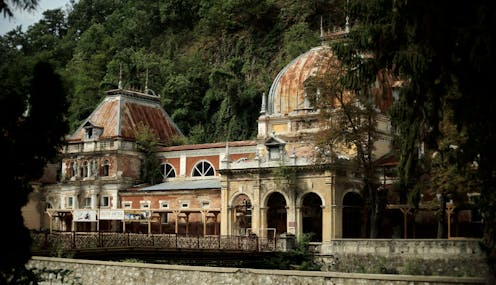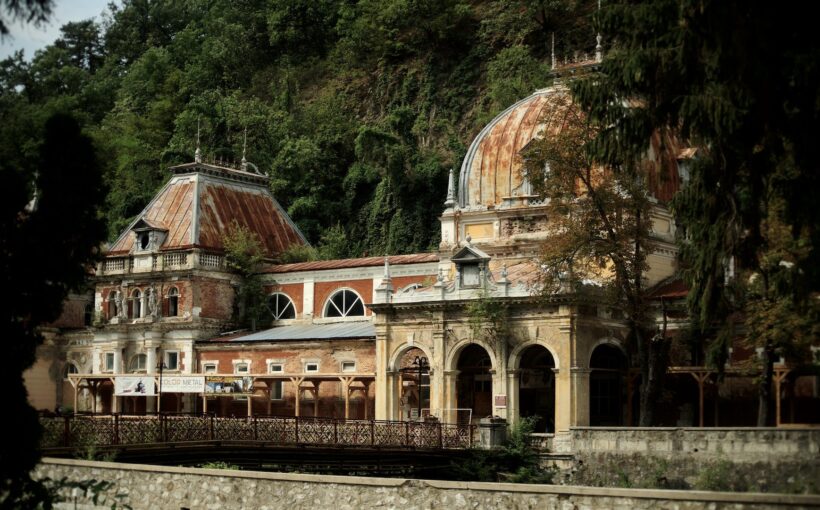
Do you believe in ghosts? If so, there is a whole genre of digital storytelling to explore on YouTube. My recent research (which identified more than 60 dedicated channels) has shown that there is a fast-growing audience on YouTube for paranormal investigations that are filmed like a virtual tour of a range of “dark” heritage sites – places with rumoured hauntings or a tragic history.
Dark tourism allows people to understand tragic events, and potentially experience a catharsis of emotions related to the deaths at a site or even help people respond to collective trauma. For example, memorials dedicated to COVID deaths have become a place for people to reflect.
The COVID lockdowns brought travel to a standstill. During this period, many museums around the world took the opportunity to create virtual tours, and many would-be tourists explored 360-degree street views that served as silent “virtual tours”.
Outside of museums, visitors also have an interest in learning about the history and stories at heritage sites which are places that contain cultural, historical or even natural significance. Commonly known heritage sites include the Unesco world heritage sites – and many nations have their own lists of heritage sites such as archaeological ruins, cathedrals or monasteries and national parks.
Dark tourism is considered a subset of heritage tourism, because many dark tourism sites are also heritage sites. For example, Leap Castle in Ireland is a heritage site with history dating back to the 1500s while also being renowned as one of the most haunted castles in Europe.
Many heritage sites are also currently at risk for a variety of reasons, including climate change, a lack of funding to maintain their infrastructural integrity, vandalism, or the impacts of mass tourism.
My paper argues that using the interest in virtual dark tourism could be one way for these heritage sites to mitigate some of these challenges.
Some people view this interest in dark sites as a kind of voyeurism and the ethics of monetising entry or tours at sites of death and tragedy have been questioned. Despite the controversies, dark tourism has a long history of attracting public interest and there are other benefits, too.
My primary case study, the YouTube channel Sam and Colby, has amassed more than 10 million subscribers and over 1 billion views.
These two US-based content creators have published hundreds of YouTube videos exploring haunted places, including infamous private homes. This includes locations such as The Conjuring House in the US which dates to circa 1736 (famous for its paranormal activity), multiple castles associated with dark stories like Bran Castle in Romania (the home of Dracula in Bram Stoker’s 1897 novel) and many hotels including the Grade II listed building, The Ancient Ram Inn in England, known as the most haunted building in England.
This style of digital storytelling combines typical YouTube content creation techniques, such as breaking the fourth wall (talking directly to the camera), handheld-style filming and comedic interludes to break the tension with conventions seen more in documentary films, such as b-roll (supplemental or alternative footage intercut with the main action) animations, dark lighting and music and a tour-guide style narrative arc.
Why take virtual dark tours?
Not all tourists interested in dark sites are willing to take the associated risks to their health and safety associated with exploring old buildings or to experience the potentially high levels of fear of physically visiting these haunted locations. Therein lies the appeal of a virtual dark tourism experience on YouTube.
For example, while the Museum of Partisan Glory in Odesa – an underground museum in Ukraine – is safe for visitors, paranormal YouTubers ventured deep into the former mining tunnels in 2021 escorted by a local guide despite the risks involved. The catacombs are largely unmapped and could result in explorers getting lost and there are precarious underground conditions.
Similarly, the Saratoga County Homestead (a former hospital opened in 1913 as a tuberculosis sanitarium that is now privately owned and attracts those who believe its haunted), was abandoned during the YouTubers’ 2021 paranormal investigation of the property. It was in a state of disrepair and could pose physical risks to visitor safety as well as charges of antisocial behaviour or illegal trespassing.
Most paranormal investigation teams on YouTube gain access to private properties with permission from the owners. Some explore abandoned buildings after dark without conducting paranormal investigations (this sub-genre of urban exploration is called urbex). Some paranormal investigation YouTube channels even have disclaimer statements noting that they do not illegally trespass and they advise viewers not to visit some of the more dangerous locations.
YouTubers are continuing to conduct paranormal investigations to challenge their own belief systems and fears, to better understand the history and happenings at dark sites (including heritage-listed places) and to share this with others through digital storytelling.
This genre has expanded to a network of at five to six paranormal investigation teams who are collaborating and producing similar virtual dark tours at a variety of locations across the globe. As the audience for this virtual dark tourism content continues to grow, heritage sites at risk may benefit from developing narrative-focused virtual tours or by partnering with influential YouTubers.
![]()
Nicole Basaraba does not work for, consult, own shares in or receive funding from any company or organisation that would benefit from this article, and has disclosed no relevant affiliations beyond their academic appointment.



